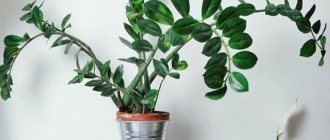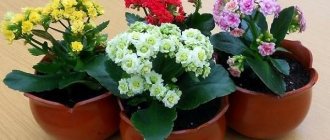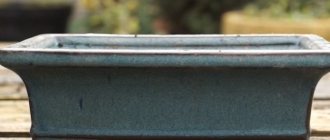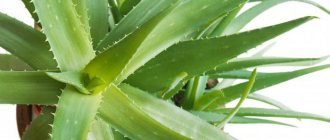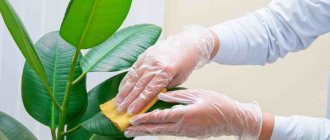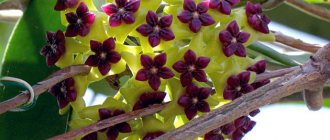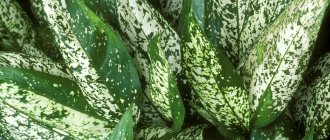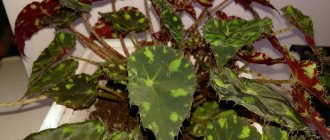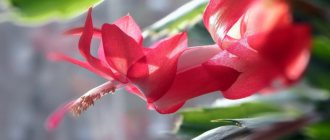A unique plant, which is the object of adoration for many gardeners, the bonsai tree is considered a real exclusive among indoor flowers. Experienced professionals can grow a copy of a real tree that fits on a coffee table, but even novice gardeners can start a bonsai and care for it.
Is it possible to keep a bonsai tree at home?
According to the teachings of Feng Shui, any living plant affects the energy of the room in which it is located. A mini bonsai tree can even out unstable flows of energy in rooms of complex shape. It can be confidently installed in attic rooms with uneven ceilings and walls, in dark corners far from natural light, next to doors. You can enhance the influence that a bonsai tree has on the atmosphere in your home if:
- charge water for watering plants with precious stones and metals;
- talk to the bonsai and treat it without malice;
- periodically play pleasant classical music for the tree.
DIY substrate step by step
As an example, let’s look at preparing soil for deciduous plants, the recipe for which was given just above:
- Calculate how many components will be needed to fill the pot.
- Place pumice and lava in a thin layer on a baking sheet and place in the oven preheated to 100 ºС. This is necessary to kill all possible pathogens.
- Akadama usually arrives already disinfected. It is enough to sift it to remove dust.
- Cool the pumice and lava stones and mix them in the required proportion with sifted akadama.
- Fill the pots with soil.
5/5 — (1 vote)
Which tree to choose for bonsai?
When thinking about which dwarf plant to choose, it is worth considering the variety of types of miniature trees that are suitable for growing at home. An important criterion is the height of the future tree; you need to pay attention to this factor before buying a bonsai for your apartment. Many mini-trees grow beautifully at home and can decorate the interior of any room. The following types of small plants grow best and do not cause much trouble:
- citrus fruits – lemon, tangerine and others;
- pomegranate;
- ficus benjamina;
- willow;
- Apple tree;
- maple;
- pine.
What kind of land is needed for cultivation?
It is worth remembering that trees grown as bonsai change the size of not only the trunk and branches. The root system also undergoes changes, and is not able to function in the same way as the one that belongs to ordinary wild “brothers”.
Therefore, the soil for miniature specimens should also be different and have the following properties:
- retains moisture well. It is necessary that the soil remains moist between waterings;
- provide aeration. It is necessary that voids or small air pockets form in the soil so that the roots can receive oxygen. Beneficial microorganisms involved in the process of processing nutrients supplied to the roots of the plant will also develop here. Large soil particles that do not adhere closely to each other will help achieve good aeration;
- have good drainage qualities. Excess water is detrimental to the plant and can cause root rot. Therefore, although the substrate in the pot should be moistened, it should not be excessively moistened.
Bonsai tree pot
A simple pot is not suitable for a mini-tree. When choosing a container in which the plant will grow and develop, you need to remember the translation of the word “bonsai” - tree on a tray. A dwarf tree requires a special pot, low and wide, similar to a dish with low sides. Light materials such as plastic are not suitable for the place in which the bonsai will grow - as the plant ages, it gains weight and may fall. Massive containers and bowls for planting a bonsai tree made of clay and ceramics of various shapes can be found in specialized stores.
Transplantation: rules, root pruning, pot preparation
Bonsai replanting is needed to replace depleted soil and trim roots, remove rotten and diseased fragments. It is required once every 2-3 years. In this case, we change the pot only once - when we transfer the tree from the “children’s” pot to a permanent one. It will not be changed in the future.
When transplanting, the pot is washed inside and disinfected. It is heated to 90-95°C with boiled water, changing it several times. To keep a tree with rhizomes almost flat in shape, wire is threaded through the holes to drain excess moisture. It will also hold the mesh.
Trimming roots when replanting and preparing the pot
Take out the plant, shake off the soil and trim the roots. When transplanting from a children's pot, remove up to 2/3 of the roots. Cut off those that point downwards, leaving those running horizontally. An example of such root pruning is shown in the figure above.
If the root system looks more like a sponge and there is no way to isolate the roots, take a thin wooden stick (skewer) and pierce the lump from top to bottom. In this case, part of the roots breaks off, while others straighten. When you can already understand what is where, you pull it out with your fingers and start trimming.
When replanting a bonsai, cut off the roots and change the soil, but not the pot.
Place the prepared plant in a pot, thread a wire through the roots and secure the bonsai. Fill 3/4 of the pot volume with the prepared soil mixture. After transplanting, keep it in the shade for a couple of weeks, water regularly, but make sure that the soil does not become acidic. Gradually move the pot to the place where it should be.
This is a short guide to growing bonsai. A formed plant requires feeding and care that this species needs. The difference from their “ordinary” counterparts is pruning and replanting.
Bonsai tree soil
The right soil can provide the plant with the necessary nutrition and moisture. Not every land is suitable for growing dwarf trees. Akadama - a special nutritious soil mixture for bonsai consists of several layers of clay, sand, humus, combined in certain proportions. Depending on the type of plant, akadama is prepared in different ways.
- A deciduous bonsai tree needs soil prepared from seven parts of earth and three parts of washed river sand.
- For flowering trees, a mixture consisting of seven parts soil, two parts sand and part humus is required.
- The coniferous bonsai tree grows well in a mixture prepared according to the proportions: two parts earth and two parts sand.
Selecting seeds for planting
To grow a Japanese-style mini-tree from a tiny seed or fruit, you first need high-quality planting material. The easiest way to find seeds of local crops is to collect them in the nearest forest, park or botanical garden. It is advisable to do this in October or early November. As for the cones, they should be picked in winter, choosing those whose shreds have not yet had time to open.
13_zamenitel_kofe_buk_kofe_iz_zheludey.jpg
5bb70b63c79e25bb70b63c7a3a.jpg
The following types of plants are suitable for growing bonsai at home:
Coniferous trees: Japanese white pine, Scots pine, mountain pine, juniper, cypress, fir, boxwood, spruce, thuja.
Hardwood:
1) deciduous: privet, beech, small-leaved elm, oak, maple, chestnut, cinquefoil, ash, fig tree (fig), zelkova, ginkgo biloba, holly, cherry, pomegranate and others.
2) evergreens: tea tree, Japanese privet, zanthoxylum, sageretia, olive, cork oak.
100-realnye-semena-klena-acer-palmatum-semena-mini-bonsay-derevo-krasnyy-zelenyy-klenovyy-list-30-chastic.jpg
Seeds of exotic trees for bonsai are often offered by online stores in China and Japan - that is, the countries where this art originated. However, even if everything sprouts, without regular pruning and shaping, the plant will look quite standard, no different from its “wild” counterparts.
htb1hfeeairrk1rjsspaq6arexxa9.jpg_q50.jpg
How to grow a bonsai tree?
A miniature copy of your favorite plant, placed on a coffee table, will delight the owners for a long time. It is possible to grow a bonsai tree yourself, but in this matter you must follow important rules, without which it is difficult to achieve success. The art of bonsai requires patience, time, desire and true inspiration from the owner. You can grow a mini-tree from seeds or cuttings, or you can form a bonsai from a money tree, or any indoor flower. The process of growing a dwarf plant comes down to the main points:
- slowing down tree growth;
- formation of plant shape.
How to make a bonsai from a plant?
You can form a miniature tree from a houseplant with a developed above-ground part, for example, from a fat plant, using certain tricks. Knowing how to trim a money tree to make it a bonsai, how to properly intertwine the trunks of the plant and not damage them, you can get a beautiful and unusual indoor tree that will surprise your guests. Forming a fancy shaped trunk for bonsai can be done using strong but soft wire. To do this, the plant trunk is tilted and fixed in this position with a wire.
How to grow bonsai from cuttings?
When choosing a method for growing a mini-plant, you need to pay attention to the fact that from a cutting you can quickly get a full-fledged bonsai tree, as long as it grows, it is known: from a cutting a tree is grown a year faster than from seeds. This method is called “sashiki”; its advantages are considered to be economical and reduce the time of plant growth. To get a small bonsai tree you will have to make an effort and follow the step-by-step instructions:
- Cut a cutting of the plant you like - a twig 5-10 cm long, 4-5 cm thick.
- Plant the cuttings in the ground at an angle of 45°, cutting off the shoots.
- Water the branches periodically, monitor the temperature, and avoid hypothermia.
- When the plant takes root, transplant it into a bonsai pot, shortening the roots.
- You can start pruning the crown when the tree trunk grows to 30 cm in length. The branches need to be cut and wrapped with soft wire.
- To slow down the growth of a bonsai, you need to make several horizontal cuts along the tree trunk.
- By bending the trunk of a plant and fixing it with wire, you can achieve the formation of various tree shapes.
How to grow a bonsai tree from seeds?
The second way to grow a mini plant is to grow special seeds. In order to figure out how to plant a bonsai tree from seeds, you should remember the concept of stratification, this is a procedure in which seeds for planting are kept in the refrigerator for several months at a certain humidity. The prepared seed quickly awakens when exposed to heat, if you follow certain rules:
- The best time to plant bonsai seeds is during the spring months.
- It is better to use sand-peat substrate for sowing seeds.
- Before the first shoots appear, the container with the seeds should be in a dark place; the seeds germinate well under a film in a greenhouse.
- The greenhouses with seeds must be ventilated periodically.
- As soon as the first shoots appear, future bonsai need to be brought into the light, regularly watered and fertilized
- It is necessary to replant the plants when the size of the sprouts is 10-12 cm.
- When replanting, the roots of future trees should be cut off by a third.
Bending and shaping
To give the tree the desired shape or slope, use thick aluminum or copper wire. It is wound around the trunk and branches. All that exist at the moment or only those that need to be “moved” or bent.
One of the techniques for forming a bonsai tree. This birch is one of the most flexible plants
They usually start from the trunk. They start from the roots, moving to the top. Then they move on to the branches. If you don't want wire marks left, don't wrap it too tightly. Once the wire is in place, slowly and smoothly bend the plant into the desired shape. Sometimes, to hold the barrel, you have to wind a double helix.
For beginners, the best tactic is to choose a sample and strive to repeat it
Bend coniferous plants especially carefully. For them, it is necessary to begin formation already in the first/second year. Therefore, take young seedlings or two-year-old cuttings. When growing bonsai from spruce, cedar, larch and pine, shape the branches immediately after the growth of young shoots stops. Partially cut them off, wrap the remainder with wire and direct them in the desired direction.
The wire is removed only after the trunk and branches have completely hardened and taken the desired shape
With wire you keep plants for six months or more. At this time, water it regularly and feed it with fertilizers for the species being grown. Then you can remove the wire and transfer the plant to the “main” pot.
Bonsai tree - care at home
Many lovers of exotic plants want to have a miniature tree, which is an exact copy of the real one. Caring for a bonsai is not an easy task, it requires:
- in the formation and pruning of the crown;
- regular watering;
- applying the necessary fertilizers;
- ensuring wintering that will not cause harm;
- pest protection;
- treatment for diseases.
Bonsai crown formation
In order for the crown of a dwarf tree to have a certain shape, there are special techniques. The growth of young branches with small leaves is promoted by regular pruning and pinching of the crown of a bonsai tree; caring for a plant without knowledge of these techniques will be incomplete.
- Pruning is used for mature plants in early spring. Large, unevenly growing trees need crown formation. By removing the side and top shoots with a sharp garden knife, you can create the correct shape so that the flower will not fall over and will begin to grow evenly. In summer it is necessary to prune again, removing weak shoots.
- Pinching is the removal of growth buds and is a necessary procedure in order to form a money tree bonsai. The branch on which four leaves have appeared is carefully pinched and then grows branched. This method gives a lush spherical crown, the trunk of the plant thickens.
Watering a bonsai tree
Caring for a miniature tree replica is different from caring for regular indoor plants. For the growth and proper development of a dwarf bonsai tree, regular watering with melted or well-settled water is important. In spring and summer, bonsai needs abundant watering; in winter, the amount of liquid must be reduced. There are several options for watering mini-trees:
- using a special watering can;
- by immersing the pot in water;
- using a drip irrigation system.
Fertilizers for bonsai
Like any plant, a bonsai tree needs regular feeding. Every 2-3 weeks, dwarf plants must be fertilized with special mineral compounds. A living bonsai tree should be fed carefully; it does not like excess fertilizer. Depending on the type of plant, it is necessary to correctly select the composition of the mixture for fertilizing. General recommendations from experts regarding the content of beneficial microelements are as follows:
- In the spring months, when bonsai is actively growing, it requires nitrogen-containing fertilizers more than those containing potassium and phosphorus.
- In summer, with the same proportions, it is recommended to reduce the amount of mineral mixtures by half.
- Before the autumn period, the content of potassium and phosphorus in the fertilizer should be increased, and nitrogen, on the contrary, reduced.
- Plants that are actively flowering need fertilizers with a high potassium content.
Wintering bonsai
Leaving a mini-tree to overwinter in a room where the plant spent the spring and summer is wrong. Both coniferous and deciduous dwarf Japanese bonsai trees need rest during the winter. Preparations for wintering should begin in the fall: watering should be gradually reduced, pruning should be limited, and the plant should be taken outside to adapt to the colder weather. Cool basements with a stable temperature of at least +3°C are best suited for wintering. Winter care for bonsai comes down to observing the following rules:
- Watering during the winter months should be reduced to prevent the soil from drying out.
- You can take the bonsai outside, and be sure to cover it with spruce branches to protect it from frost.
- It is permissible to construct earthen pits for wintering dwarf trees.
How to propagate a bonsai tree?
It is possible to grow an exact copy of an existing bonsai if you root a shoot or cutting of an adult tree. This method is effective, and with proper care it is possible to get a small tree in a few years. By protecting the cuttings from excess moisture, drying out of the soil, excessive cold and heat, you can achieve good rooting and further growth of the plant. After the appearance of a developed root system, the plant must be transplanted into a bonsai pot, pruning the roots and forming the crown.
Trimming
Pruning a bonsai tree is an ongoing process. The primary is done before applying the wire. Cut off all unnecessary branches, wait until the cuts are healed (the juice will stop secreting and the bark will grow). Now you can wind the wire. In the future, with the help of pruning, you maintain the crown of the required shape and size, cutting off everything unnecessary. During the growing season, you may need to cut off the excess once a month.
To prevent infection when cutting branches, use sterilized pruners or scissors. Lubricate the cut area with a garden fungicide to prevent rotting.
Crown formation is a constant process. It allows you to maintain the desired plant height. And it is not necessary to remove dried branches. They give a special flavor
When pruning, keep a picture in your mind (or in front of you) of what you want to achieve. And form the crown exactly the way you want to see. You can trim either at the base (be it a trunk or a larger branch), or leaving a “stump” of several buds.
Diseases and pests of bonsai
Like any plant, bonsai can be attacked by pests. An attentive owner can easily notice signs of mini-tree disease. Dwarf trees are known to suffer from the following insects and diseases:
- Aphids
like to be located on the underside of leaves and feed on the sap of the plant, which leads to drying of the leaves and stems. You can get rid of aphids using folk remedies - a solution of laundry soap, and special insecticidal agents - “Iskra”, “Aktara”, “Tanrek”. - The caterpillars
are very voracious and quickly attack bonsai trees. Their traces of appearance are difficult to miss: holes on the leaves, cobwebs are a distinctive feature of the appearance of these pests. You can get rid of caterpillars using the drugs “Arrivo” and “Apache”. - Nematodes
are small worms that attack dwarf trees. The stems, buds, and roots of the plant can be affected by these insects. “Nemagon”, “Karbofos” are drugs that have proven themselves in the fight against nematodes. - Scale insects
attack the stems and leaves of bonsai and look like multiple light-colored tubercles on the plant. The drugs “Akarin” and “Bankol” help in the fight against scale insects. - Mites
are dangerous pests that attack plants. It is not easy to notice ticks; they are small in size. Cobwebs on the leaves are the first sign of the appearance of these insects; you can fight them with the help of Fitoverm and Fufanon. - Rust
affects the upper part of the plant, as a result of which the bonsai may lose leaves; this is a fungal disease that can be treated with special products “Abiga-Peak” and “Cumulus”. - Verticillium
is an infectious disease that occurs when plants are pruned incorrectly. The leaves of the tree turn yellow and dry out, and the bonsai may die. This disease must be treated by removing the affected stems and leaves, as well as treating the plant with Polyram and Strobi.
Rules for processing and germination
Bonsai seeds can be processed for subsequent germination in several ways. Preparing seeds for germination is called stratification.
Cold way
Bonsai tree - types, cultivation and care at home
The method is chosen when bonsai seeds need to ripen. Relevant for thuja, pine, blue spruce. The step-by-step sequence of actions is as follows:
- Soak the seeds in warm water for 24 hours.
- Transferring the seed to the refrigerator. The time of exposure to cold depends on the variety. For southern tree species it lasts about 60 days, for northern ones – up to six months.
In this way, it is possible to create a temperature difference similar to what occurs in the natural environment.
Instead of refrigeration, it is permissible to place bonsai seed in cold soil, such as perlite or damp sand. After this, the containers are transferred to a cool but well-ventilated room, for example, a balcony.
Note! The use of organic soils can cause contamination of seeds with bacteria and mold, so it is better to avoid them.
Seeds are checked twice a month; rotten and spoiled ones are thrown away; those that hatch should be planted immediately.
Correct stratification is the key to growing a beautiful miniature tree
Warm stratification
The main purpose of the procedure is to awaken the seeds for bonsai. The required mode is humidity 70%, temperature – +20 ℃. This is done in several ways:
- The seeds are placed between layers of damp cloth and placed in a bright place where the sprouts will appear.
- Instead of napkins, it is permissible to use a wet sponge or coconut substrate.
To create a greenhouse effect, the structure is covered with film.
Combined processing method
In this way, pre-planting seeds of cedar and maple, sakura and other crops with a long growth cycle are carried out. This stratification involves alternating exposure to cold and heat. At the first stage, bonsai seeds are placed in cold water or taken to a cool room. And immediately before planting - in warm liquid. This allows the seeds to germinate quickly.
Growing bonsai from seeds is an art, but anyone can master it if they want.
The bonsai tree has dried up - what to do?
Errors in caring for a capricious dwarf plant can lead to illness and even death. If your home bonsai tree has dried out, you can save it if you understand the reason for its deterioration. Deciduous plants can shed leaves not only in the fall, but also under the wrong conditions. The faster you help a tree, the greater the chances of saving it. Common causes of bonsai death are:
- pest damage;
- improper plant replanting;
- watering errors;
- depletion of nutrient soil;
- incorrect light mode.
Features of purchased soil
You can also buy ready-made substrate for growing bonsai in the store. Most often you can find the following brands on the shelves:
- ASB Greenworld for cacti and bonsai;
- COMPO for bonsai Sana;
- bonsai substrate “Gardens of Aurica”;
- primer "Fasco" "Flower happiness" for conifers and bonsai.
However, before making a choice, you should carefully study the composition. Very often the main component in it is peat. In such soil the plant will develop slowly, and it will not be possible to achieve a beautiful flowering appearance of the plant.
Good quality substrate can be purchased in foreign online stores. However, most often such products are presented without translation into other languages, so when purchasing you will have to rely on the pictures.
Considering how many difficulties must be overcome to acquire good soil, it is easier to abandon this idea and collect a suitable substrate yourself.
Planting a seed, soil composition
Prepared seeds are planted in spring, late summer or even autumn. Peat cups or pots pre-filled with a mixture of sand and peat in a 1:1 ratio are excellent for planting. You can replace this composition with store-bought cactus soil, to which coarse sand should be added. The soil mixture should not fill the container to the brim; you need to leave about three centimeters to the top. Next is 1 centimeter of prepared, but already sifted soil. Next, the soil needs to be pressed down a little with a piece of wood and the seeds laid out. They are sprinkled with sand on top. The thickness of the last layer should be a maximum of two diameters of the seed being planted. Press it down again with a piece of wood and water it a little.
The seeding container is covered with polyethylene or glass to create a greenhouse effect and placed in a place away from sunlight and high temperatures, which should not exceed +15 degrees Celsius.
The soil in the container should be constantly moist, not dry out or filled with water.
How to germinate seeds, is pre-treatment necessary?
In order for the seeds to be ready for planting, they must be properly germinated and treated with preparations, otherwise problems such as seed death due to certain diseases are possible. Before planting, the seeds are placed in water for several days to swell and begin the process of primary germination. It is also possible to germinate seeds in sphagnum moss or vermiculite. In this case, it is advisable to break the hard shell of the seeds. This process provides better germination. Further, in order to avoid the appearance of plant diseases, the seeds should be treated with a fungicide, liquid or dry, and the soil must be sterilized.
